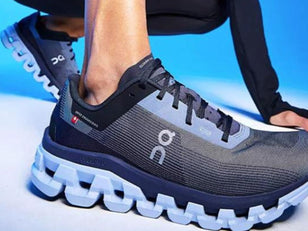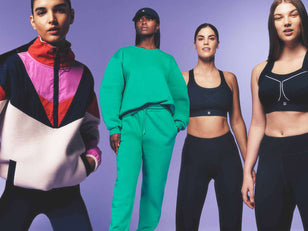
Buying Guides
Sale
Shop the SaleNew Brand Drops
All New inFeatured
All BrandsFeatured
All ShoesTrending
All Articles
Buying Guides
Nike Zenvy & Universa Leggings Review

Buying Guides
Sports Bras: Compression vs Encapsulation

Shoe Reviews
HOKA Anacapa 2 Mid Gore-Tex Review

Shoe Reviews
On Running Cloudflow 4 Review

Buying Guides
Stay Cosy Outdoors: The 5 Best Fleece Options for Women

Buying Guides
Sweaty Betty Size Guide
Earn points towards free products, discounts & more
Not a member?
Find out moreYour cart is empty


SUSTAINABILITY RATING: 2/5
Since its founding in 1996, Under Armour has grown rapidly to become the leading challenger sportswear brand, with revenues of over $5bn. However, UA scores poorly on our sustainability framework metrics. The new CEO has made sustainability one of the brand’s new core values, so we are intrigued to see what impact he has, but UA has a long way to go to match the steps adidas and Nike have taken in this area.

Sustainable Materials
According to a recent Under Armour report, the company engages with suppliers to promote ethical and continuous improvement in its supply chain practices. The report also states that third-party manufacturers have varying sustainability and so the company regularly addresses issues in the chain, even those that aren’t systemic or reported. Despite this general statement, there is a lack of evidence when it comes to sustainability. An investor report from the brand states that the company is working towards implementing the FLA's Principles of Fair Labor and Responsible Sourcing and Production. As yet the company uses few eco-friendly materials in its product line.

Labour Welfare
While some of the Under Armour supply chain is certified by the FLA Workplace Code of Conduct, there are some gaps. For instance, in-licensed products. Moreover, the company does not publish a full list of its suppliers or comprehensive information regarding its labour welfare. There is no information about gender equality, forced labour, or freedom of association. The brand may publish information about audits and supplier policies. There is no information or up-to-date evidence that suggests all of the workers in its supply chain are paid a fair, living wage. UA received a relatively low 29% score on the latest Fashion Transparency Index (Nike is 55%, adidas 69%).

Manufacturing
Back in 2015, a report from Rainforest Action Network (RAN) highlighted Under Armour as one of the brands that need to take responsibility for their supply chains and protect forests. However, as of now, we have seen no evidence to suggest it is taking such steps. In terms of materials, Under Armour does not use fur or exotic animal skin in its products, it does use leather, wool, and down. The latter is accredited by the Responsible Down Standard. Under Armour does track some of its animal product usage from the first stage of development and manufacturing. There is also no evidence that the company is working towards any water reduction initiatives or textile waste reduction initiatives. Similarly, the company does not provide any evidence that it is attempting to decrease or avoid using any hazardous chemicals.
*Excludes sale. Plus get exclusive access to new drops, sales & more!